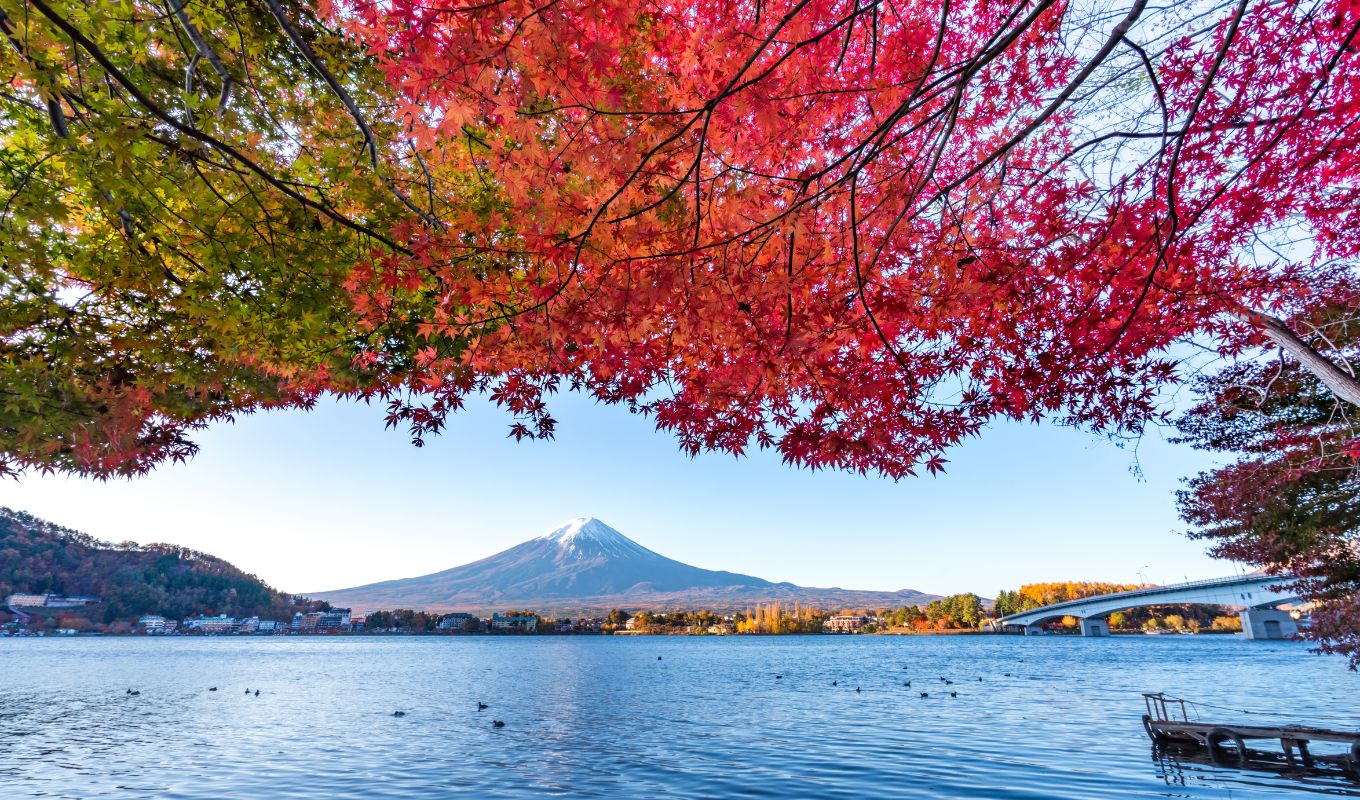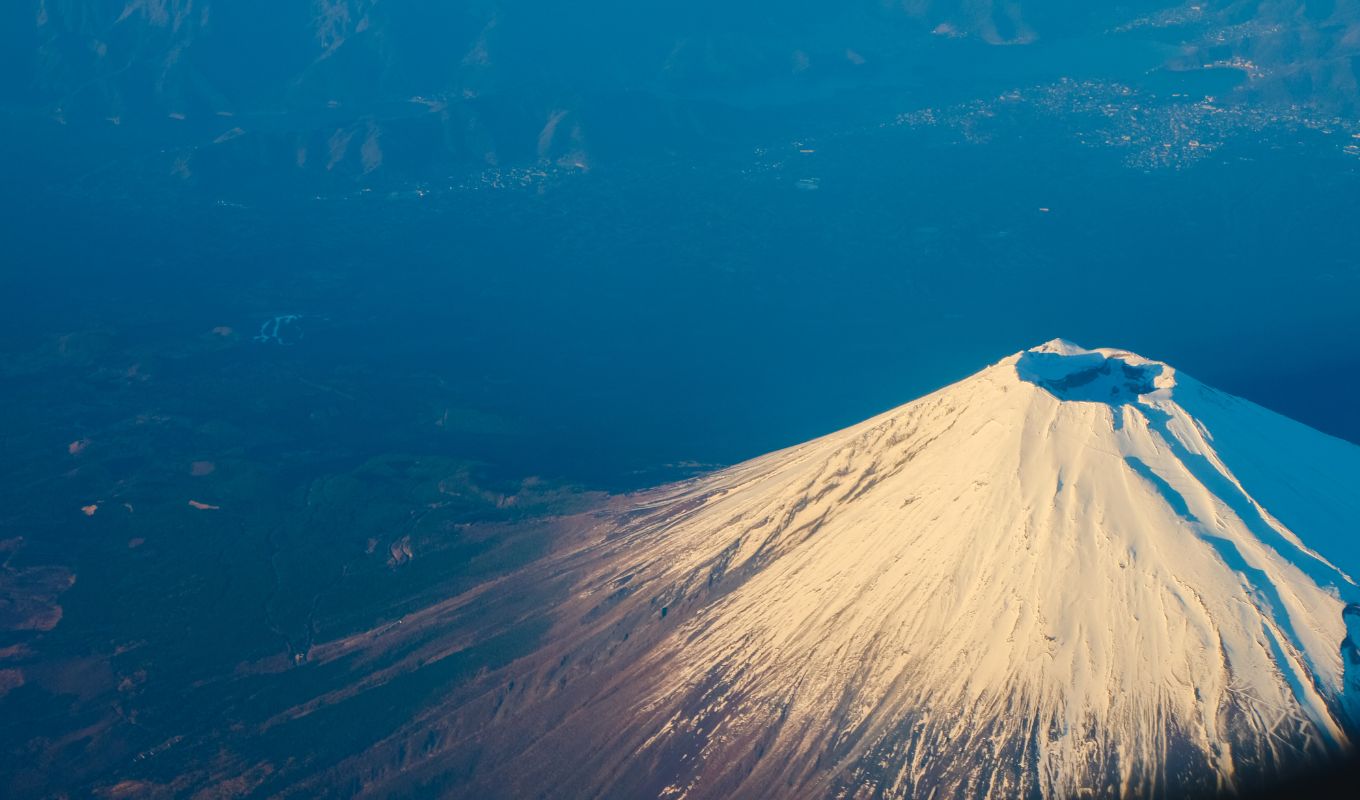Mount Fuji is a memorably wonderful and popular destination for both Japanese and also international tourists. Every year thousands of people make the pilgrimage to its summit.
Around one-third of those who annually climb this massive mountain are tourists visiting Japan. Let’s look at some of the reasons why Mount Fuji is so globally famous, culturally important to Japan, and such a popular tourist destination.
Fuji-San: Japan’s Tallest Mountain
In Japanese, the mountain is referred to in an animistic way as “Fuji-san”, essentially meaning “honorable Fuji” just as any human’s name receives the “san” suffix in Japan. The tallest mountain peak in Japan at a reported measurement of 3,776 meters (12,388 feet), Mount Fuji is truly a massive landmark easily visible from many areas of Japan.

Most notably, a view of this mountain from Tokyo makes for a wonderful treat on a clear day. Winter is supposedly the best time of year to catch such a view because of the atmospheric conditions, while sunrise or sunset are likely the best times of the day.
The Beauty Of Mt Fuji

What is it about this famous mountain that makes it worth going to any great length for a proper glimpse of it? It is likely as iconic as it beautiful, and in some ways likely so iconic as a result of its beauty.
The cone at its peak is surprisingly symmetrical for a volcano and such formations are relatively geologically rare, especially for such a large mountain like Fuji. The way the snow forms around this glorious natural masterpiece also has likely inspired much of its reverence in both animistic traditions and also in artistic renditions of its amazing profile.
Artworks Of Fuji

Famous classical Japanese artists such as Hokusai have gone to great lengths to honor Fuji-san with popular masterpieces in their own right.
Perhaps the most famous single piece of classical Japanese art is one particular depiction by Hokusai of a snow-capped Mount Fuji in the background of a highly stylized ocean scene in which giant white-capped waves resemble Fuji itself carrying boats of Japanese fishermen.
This was the first in his series of 36 pieces of art depicting Fuji-san which was entitled, appropriately enough, “36 Views of Mount Fuji”. The same artist also did a series called “100 Views of Mount Fuji”, if that is any indication of just how enthralled he and his contemporaries were by the mountain’s iconic beauty.
The Sacred Mountian Of The Gods

The mountain also has its place in the spiritual traditions of Japan and the various sacred gates and shrines at its peak are a good indication of its importance.
To some traditions, Fuji is even considered to be an actual deity and is regarded and respected appropriately. Further evidence of this is, rather sadly, in the number of suicides performed at its base in the forest area known as Aokigahara. It is listed as the second most popular suicide location in the world. According to reports, in the year 2002, there was a high of 80 suicides at the base of the mountain and an annual average of around 30 a year since the 1950s.
How The Wise Climb Mt Fuji

On a lighter note, thousands of people ascend from the base of Fuji-san to its peak every year to enjoy the view from the top and, of course, to say they had done it. A famous Japanese saying goes: “A wise man climbs Fuji-san once, a fool climbs it twice.”
If you want to go for a climb to the summit, it is likely easiest in the months of July and August. October through May climbing the mountain is basically off-limits due to conditions, unless you are an experienced mountaineer and are properly equipped with equipment for snow and ice. Have fun and enjoy beautiful Mount Fuji.